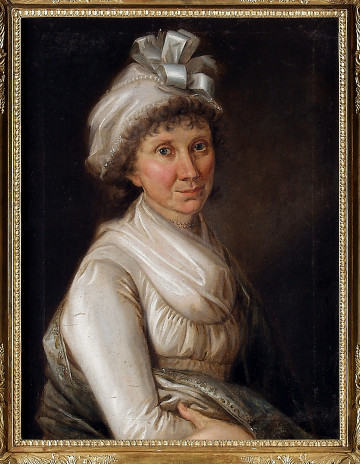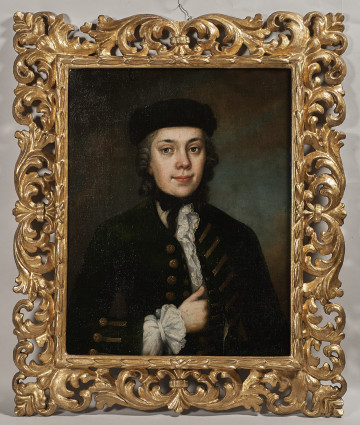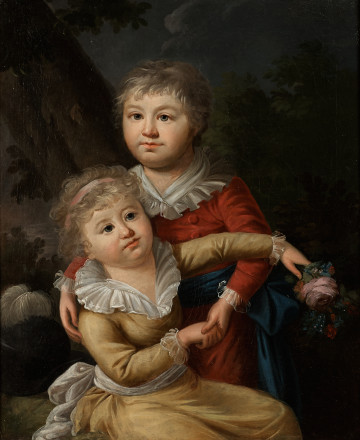
Portrait of Aleksandra Potocka, née Lubomirska
2nd half of the 19th century
Castle Museum in Łańcut
Part of the collection: Ikony
Crucifixion, silhouette icon. Metal Christian worship objects brought from Byzantium to Ruthenia began to be replaced from the late 11th century by local products, including octagonal crosses with three transverse beams (see S.12789MŁ; S.12792MŁ; S.12793MŁ; S.12795MŁ; S.12869MŁ; S.12871-12876MŁ). Their popularisation begins with non-canonical apocryphal texts brought to Ruthenia in the 12th century. These stories are about the history of the tree of the Holy Cross and, although they differ in detail, they explain the origin and shape of the cross. For example, according to the Tale of pope Jeremiah, Seth, who was the great ancestor of Jesus, planted a branch brought from the Garden of Eden on the grave of his father Adam on Golgotha. According to another version, he sowed three seeds. From this branch or seed grew cedar, pine and cypress. Leaving aside the details of the story, the six-pointed Cross of Christ was made from these three trees, with the lower beam serving as the condemned man’s footstool and, at the same time, symbolising dignity and majesty. The eight-pointed cross was created when Pilate added a fourth beam at the top, actually a plank of olive wood, called “titulus” in Latin and “tytel” in Ruthenian, bearing the inscription representing the guilt of Christ “Jesus the Nazarene Tsar (King) of Judea” (Mt 27:37; Lk 23:38; Mk 15:26: J 19,19). Although Zosimus, the Metropolitan of Moscow, at the beginning of the 16th century included the apocrypha to the forbidden books as incompatible with the canonical books, the eight-pointed cross survived. It was considered the only acceptable one among the followers of the old Orthodox church tradition called Old Believers. Old Believers, also known as Old Ritualists, did not accept the liturgical reform initiated in the Moscow Orthodox Church by Patriarch Nikon in the mid-17th century. Despite persecution, from the late 17th century they developed and dominated the production of metal religious objects. Their products were eagerly used or imitated and copied by the faithful of the official Orthodox Church. Teresa Bagińska-Żurawska https://orcid.org/0000-0002-9243-3967
Dimensions
height: 10.9 cm, width: 6.5 cm
Object type
Icons
Technique
cast
Material
bronze
Origin / acquisition method
decyzja administracyjna
Creation time / dating
Creation / finding place
Owner
Castle Museum in Łańcut
Identification number
Location / status

2nd half of the 19th century
Castle Museum in Łańcut

3. ćwierć XVIII wieku
Castle Museum in Łańcut

1. ćwierć XIX wieku
Castle Museum in Łańcut
DISCOVER this TOPIC
National Museum in Lublin
DISCOVER this PATH
Educational path